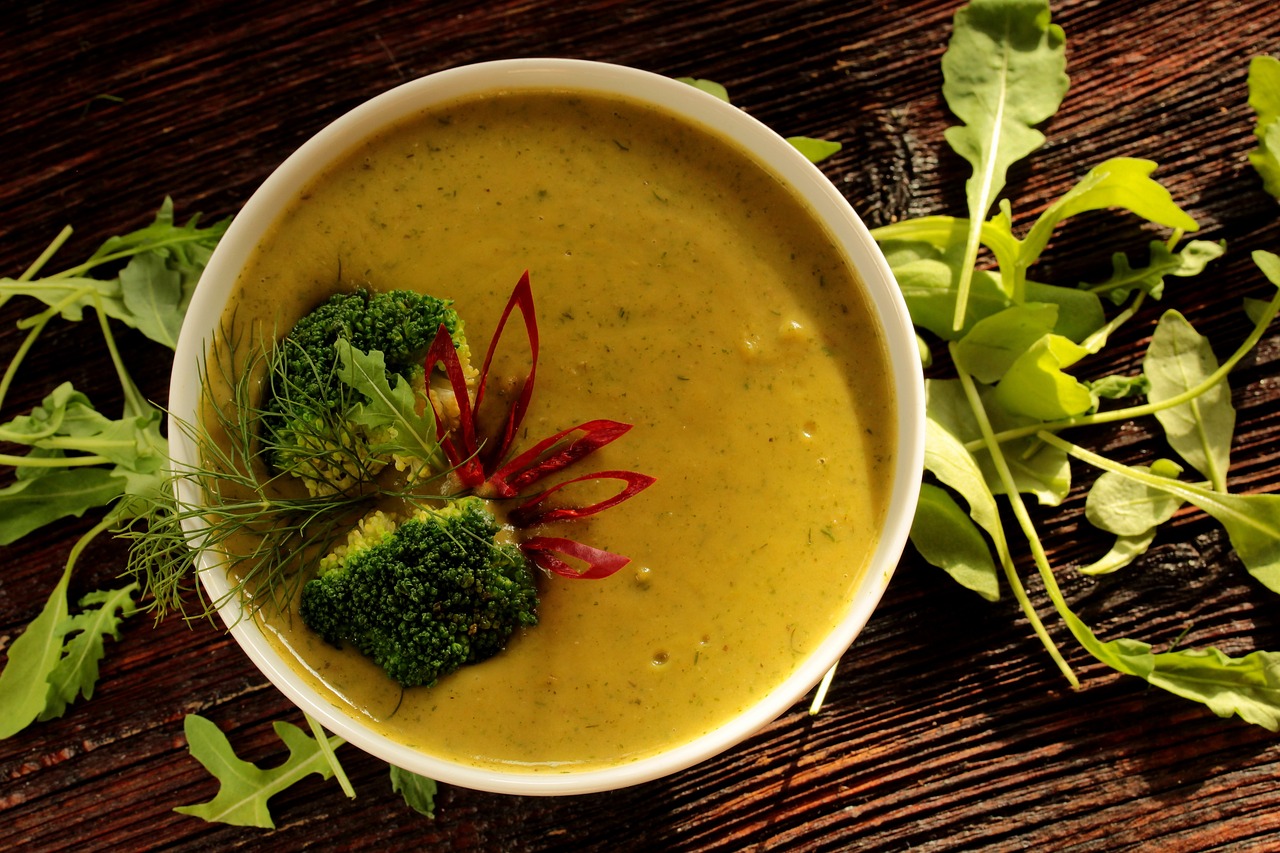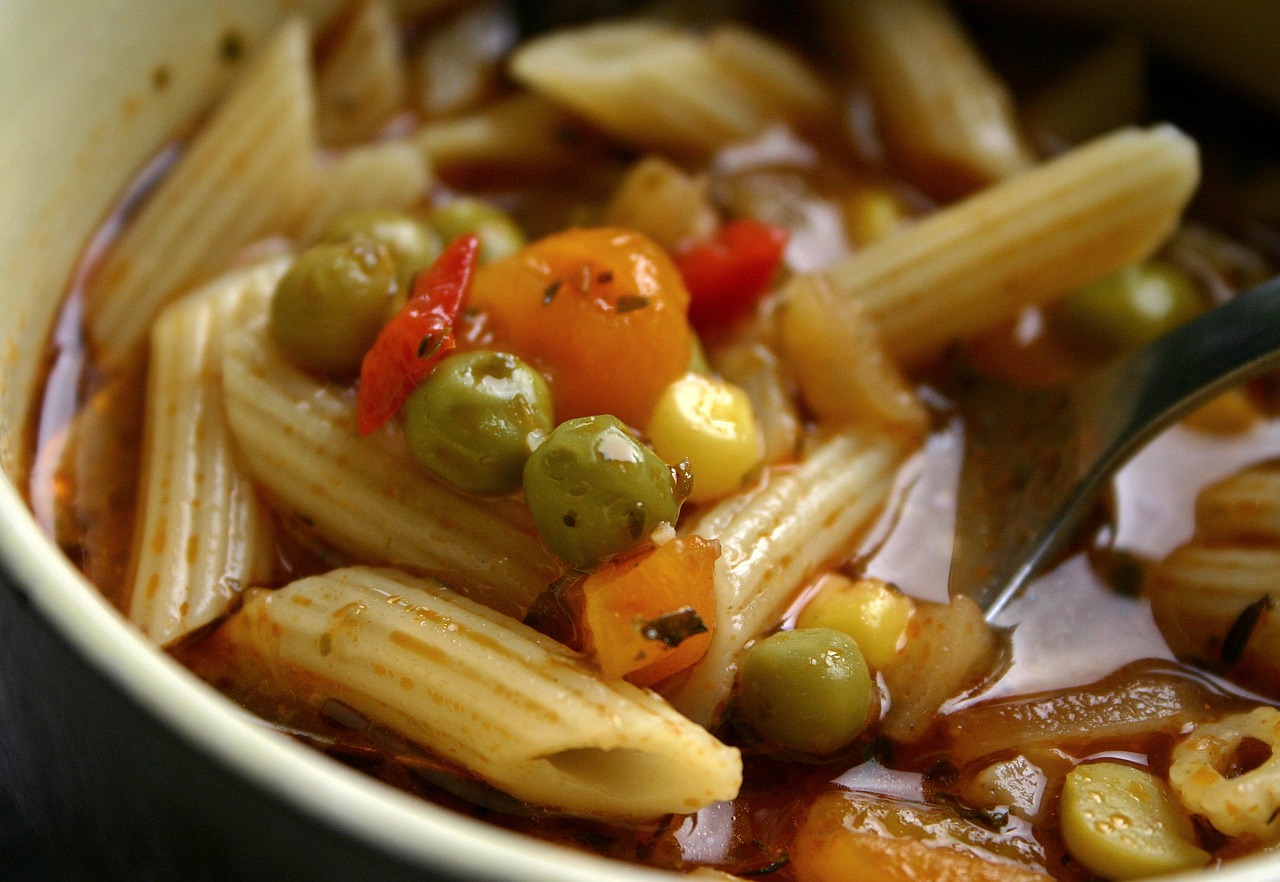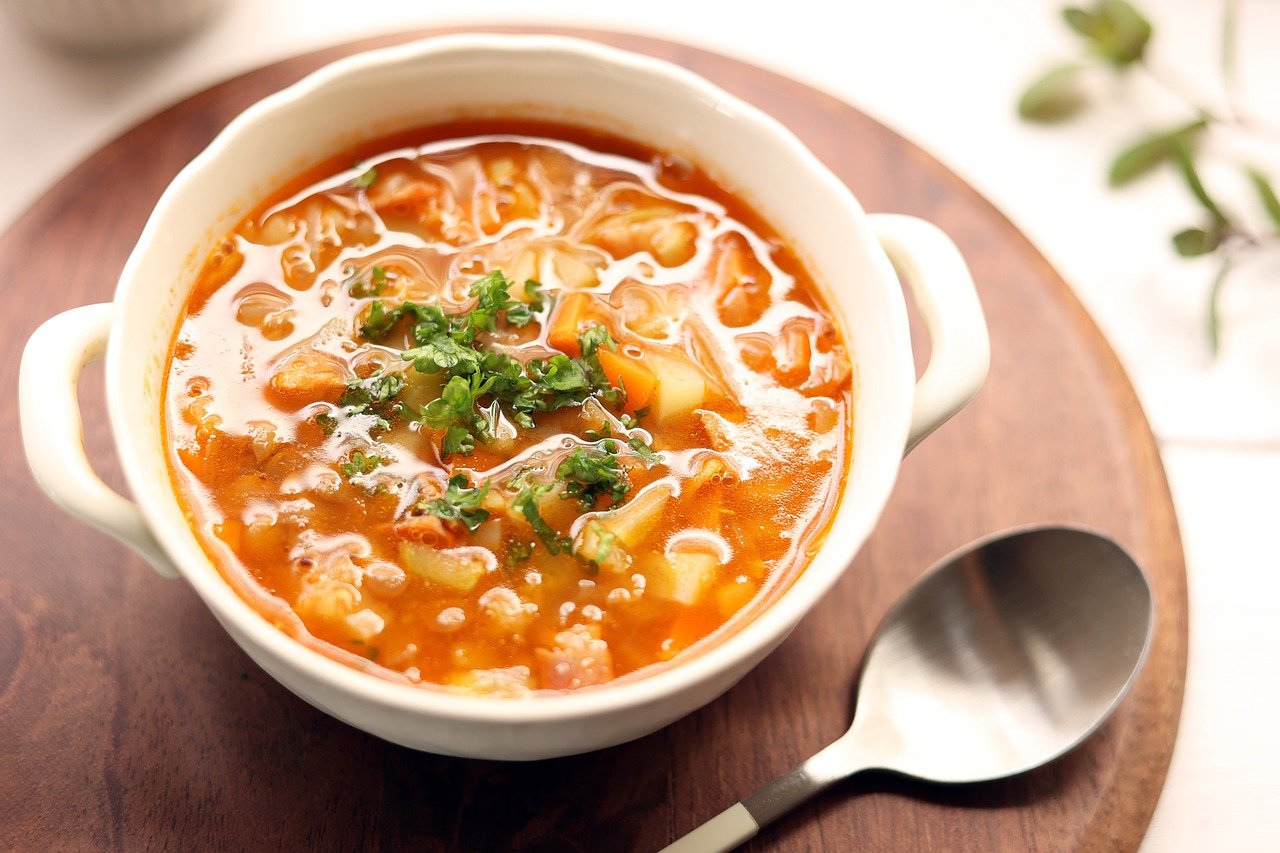Minestrone Soup: Hearty and Nutritious

Minestrone soup is a delightful concoction that embodies both heartiness and nutrition in every spoonful. Imagine a warm, comforting bowl filled with a vibrant array of vegetables, hearty beans, and a flavorful broth that dances on your taste buds. This classic Italian dish has stood the test of time, not only for its delicious taste but also for its nourishing qualities.
When you take a journey into the history of minestrone soup, you uncover its ancient roots dating back to the Roman era. Over the centuries, this humble soup has evolved into a beloved staple in Italian cuisine and beyond. Its transformation into a vegetable-based medley reflects the adaptability and creativity of culinary traditions passed down through generations.
What makes minestrone soup truly special are the carefully selected ingredients that come together harmoniously in each bowl. A colorful mix of seasonal vegetables, robust beans, fragrant herbs, and sometimes a touch of pasta or rice creates a symphony of flavors and textures that are as satisfying as they are nutritious.
Delving into the health benefits of minestrone soup reveals a treasure trove of goodness. Packed with essential nutrients, vitamins, and fiber, this soup not only nourishes the body but also supports overall well-being. Whether you're looking to manage your weight or simply boost your daily intake of veggies, minestrone soup offers a wholesome solution.
As you explore the world of minestrone soup, you'll encounter a myriad of variations that reflect regional influences and seasonal produce. From the traditional recipes originating in different parts of Italy to modern twists that incorporate unique ingredients and innovative flavors, there's a minestrone soup for every palate and occasion.
History of Minestrone Soup
The history of minestrone soup is a fascinating journey that takes us back to ancient Roman times. Originally a simple dish made with whatever vegetables were in season, minestrone has evolved over centuries into the hearty and nutritious soup we know today. Its name comes from the Latin word "minestrare," which means "to serve."
In ancient Rome, minestrone was a staple food for the lower classes, consisting of vegetables, grains, and sometimes meat cooked in a broth. As the recipe spread throughout Italy, each region added its own twist, incorporating local ingredients and culinary traditions.
During the Renaissance period, minestrone became popular among the wealthy as well, with chefs experimenting with different combinations of vegetables and herbs to create more refined versions of the soup. By the 18th century, minestrone had become a beloved dish enjoyed by people of all social classes.
One of the defining characteristics of minestrone soup is its adaptability. It can be made with a wide variety of vegetables, depending on what is available, making it a versatile and economical meal. Over time, minestrone has been embraced by cultures around the world, each putting its own spin on the classic recipe.
Ingredients in Minestrone Soup
When it comes to the delightful concoction that is minestrone soup, the key to its flavorful and nutritious profile lies in its diverse range of ingredients. Each component plays a crucial role in creating the rich taste and wholesome experience that this classic Italian dish is known for.
At the heart of a traditional minestrone soup recipe are an array of fresh vegetables, such as tomatoes, carrots, celery, onions, zucchini, and spinach. These vegetables not only add vibrant colors to the dish but also contribute essential vitamins, minerals, and antioxidants to boost overall health.
Another essential element of minestrone soup is the inclusion of beans, typically kidney beans or cannellini beans. These legumes not only provide a hearty texture to the soup but also serve as a great source of plant-based protein, making it a satisfying and nutritious meal option.
Herbs and seasonings play a crucial role in enhancing the flavors of minestrone soup. Common herbs like basil, oregano, thyme, and bay leaves are often used to infuse the broth with aromatic notes and depth of taste. Additionally, a generous sprinkle of salt and pepper helps to balance the flavors and elevate the overall dining experience.
While vegetables and beans take center stage in minestrone soup, some variations of the dish may also include pasta or rice to add a comforting and filling element. The choice of pasta shapes or rice varieties can vary based on personal preference or regional traditions, adding a unique twist to this beloved soup.
In summary, the beauty of minestrone soup lies in its versatility and adaptability to different ingredients, allowing for endless variations to suit individual tastes and dietary preferences. Whether you prefer a classic recipe or enjoy experimenting with new flavors, minestrone soup offers a delightful medley of ingredients that come together harmoniously in each comforting spoonful.
Health Benefits of Minestrone Soup
When it comes to minestrone soup, the benefits go beyond just its delicious taste. This hearty dish is packed with a plethora of nutrients that can do wonders for your health and well-being. Let's dive into the various health benefits that a bowl of minestrone soup can offer:
1. Rich in Vitamins and Minerals: Minestrone soup is a nutrient powerhouse, thanks to the diverse range of vegetables it contains. From vitamin A in carrots to vitamin C in tomatoes, and potassium in potatoes, each ingredient contributes essential vitamins and minerals to support your overall health.
2. High in Fiber: The combination of vegetables, beans, and sometimes whole grains like pasta or rice in minestrone soup provides a good amount of fiber. Fiber is crucial for digestive health, promoting regular bowel movements, and aiding in weight management.
3. Supports Weight Management: With its high fiber content and low-calorie nature, minestrone soup can be a great addition to a weight loss or maintenance diet. The fiber helps you feel full for longer periods, reducing the likelihood of overeating.
4. Boosts Immune System: The variety of vegetables and herbs in minestrone soup are rich in antioxidants and phytonutrients that can help strengthen your immune system. Regular consumption of this soup may help ward off common illnesses and keep you feeling healthy and energized.
5. Heart-Healthy: Minestrone soup, particularly when made with a light broth and minimal added fats, can be a heart-healthy choice. The combination of vegetables, beans, and herbs can help lower cholesterol levels and reduce the risk of heart disease.
6. Hydration and Nutrient Intake: Soups, including minestrone, are a great way to stay hydrated while also getting essential nutrients. The broth in minestrone soup can contribute to your daily fluid intake, while the vegetables and beans provide a range of nutrients.
Overall, incorporating minestrone soup into your regular meal rotation can be a simple yet effective way to boost your health and enjoy a delicious and satisfying dish at the same time.
Variations of Minestrone Soup
When it comes to minestrone soup, the variations are as diverse as they are delightful. From the traditional Italian recipes passed down through generations to modern interpretations that incorporate unique ingredients and flavors, there is a minestrone for every palate and occasion. Let's dive into the world of minestrone soup variations and discover the creativity and innovation that chefs bring to this classic dish.
One common variation of minestrone soup is the choice of vegetables used. While the base typically includes staples like carrots, celery, onions, and tomatoes, chefs often add seasonal vegetables to enhance the flavor profile. From zucchini and green beans in the summer to butternut squash and kale in the winter, the possibilities are endless, making each bowl of minestrone a true reflection of the season.
Another interesting variation lies in the choice of beans. While traditional minestrone recipes call for beans like cannellini or kidney beans, some chefs opt for unique varieties such as chickpeas, black beans, or even lentils. These alternative beans not only add a different texture to the soup but also bring their own distinct flavors, creating a dynamic and rich taste experience.
Herbs and spices play a crucial role in the flavor profile of minestrone soup, and the variations in this aspect are endless. While classic herbs like basil, oregano, and thyme are commonly used, some chefs experiment with unconventional choices like rosemary, sage, or even spicy red pepper flakes. These additions can elevate the taste of the soup, adding depth and complexity that keep diners coming back for more.
One innovative twist on traditional minestrone is the incorporation of grains like pasta or rice. While purists may argue that these ingredients stray from the authentic recipe, many chefs embrace the versatility and heartiness that grains bring to the dish. Whether it's adding small pasta shapes for texture or using brown rice for a healthier option, these variations cater to diverse dietary preferences and add a comforting element to the soup.
Regional adaptations of minestrone soup also offer a glimpse into the culinary diversity of Italy. From the rich and hearty minestrone alla Genovese in Liguria, featuring pesto and potatoes, to the light and brothy minestrone di verdure in Tuscany, showcasing a medley of seasonal vegetables, each region puts its own spin on this beloved dish. Exploring these regional variations is like embarking on a culinary journey through the Italian countryside, discovering the unique flavors and traditions that define each locale.



 HazalVardal
HazalVardal 





